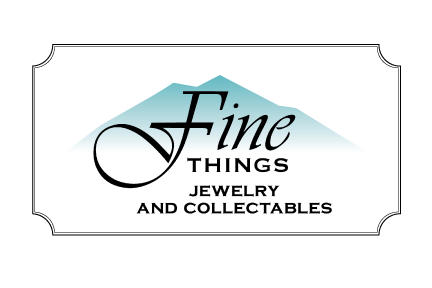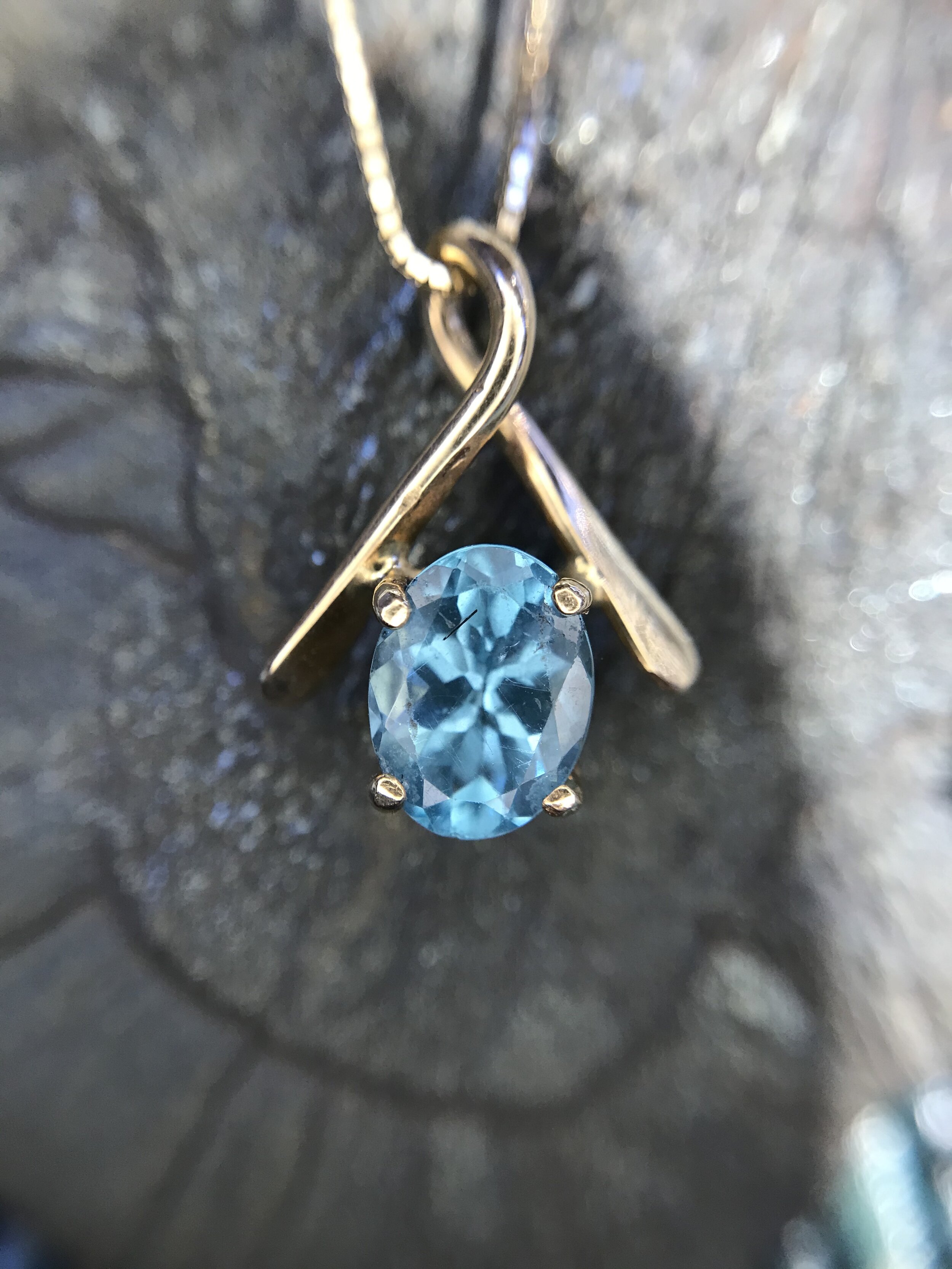Zircon
Zircon occurs in an array of colors. Blue Zircon is a birthstone for December. However, its varied palette of yellow, green, red, reddish brown, and blue hues makes it a favorite among collectors as well as informed consumers. Colorless Zircon is known for its brilliance and flashes of multi-colored light, called fire. These Zircon properties are close enough to the properties of diamond that it accounts for centuries of confusion between the two gems.
Definition:
The origins of the word “zircon” have elicited a colorful debate. Some scholars believe it comes from the Arabic word “zarkun”, meaning “cinnabar” or “vermillion”. Others think the source is the Persian word “zargun”, or “gold colored”. Considering the broad color palette for this December birthstone – red, orange, yellow, brown, green, blue, and colorless – either derivation seems possible.
Zircon crystals grow in many different types of rock and possess a range of optical and physical properties. Some Zircons – usually green ones – display much lower values for these properties than others. Scientists have determined that the crystal structures of these gems were almost completely broken down by radioactive elements – often present in zircon as impurities – that damaged the gems’ crystal structure over long periods of geological time.
Some geologists classify Zircons into three types – high, intermediate and low. A Zircon’s classification depends on its properties, which are directly related to the amount of radiation-induced damage to its crystal structure. High or normal zircons have full crystal structures, with little or no damage from radioactive elements. As a result, they have the normal physical and optical properties associated with the mineral. In intermediate or medium Zircons, radioactive elements have caused some structural damage. They have physical and optical properties that are between high and low types. Extensive crystal-structure damage from radioactive elements results in low zircons with much lower optical and physical properties. In extreme cases, they are practically amorphous, which means they lack an orderly crystal structure.
Virtually all the zircons used in jewelry are of the high type. Interestingly, radiation-induced crystal-structure breakdown can be reversed somewhat by heating zircon to high temperatures. High-temperature heat treatment repairs the stone’s damaged crystal structure.

The History of Zircon:
Zircon has been known since antiquity, albeit under various names. Today’s name is most likely derived from the Persian language meaning “golden stone”. Many people have heard of Zircon but never seen it. This is mostly because of colorless zircon’s wide use as a diamond simulant in the early 1900’s. It was long ago replaced in that role by more convincing look-alikes (cubic zirconium), but its name still means “imitation” to many people. That’s unfortunate because Zircon is a beautiful colored stone with its own fair share of folklore and charm.
Zircon found in Australia is the oldest mineral on earth: 4.4 billion years old.
According to Aristotle, Zircon is a talisman against pain and poisons. It is a stone of wisdom during Middle Ages and believed to protect people from nightmares and evil spirits.
During the Middle Ages, this December birthstone was thought to lull one into a deep, sound sleep, scare off evil spirits and promotes riches, honor and wisdom. In the Hindu religion, Zircon alternates with Hessonite Garnet as one of the nine “gems of the Navaratna”. When worn together, the nine gems protect the wearer and bring wealth, wisdom, and good health.
Victorians had a fondness for Blue Zircon. Fine specimens can be found in English estate jewelry from the 1880s. Gemologist George Kunz – Tiffany’s famed gem buyer – was a notable zircon advocate. He once proposed the name “starlite” to promote the gem’s fiery nature, however the name never caught on.
Symbolism:
This birthstone is known as a “stone of virtue” because it helps balance the virtuous aspects, those include the physical, mental, emotional, psychological, and spiritual aspects, within you. It embodies a strong healing energy and has an effective spiritual and grounding vibration. Zircon crystals are typically used in meditation, as they may aid the process.
It will help you love yourself and others, as well as to recognize the spiritual aspects of yourself. While being a predominantly spiritual stone, it is also an amazingly strong stone for grounding you.
Furthermore, it can assist you to manifest abundance and prosperity. It helps you to turn idealistic or imaginative visions into practical applications.
Zircon is an energy-stimulating stone that can help “wake-up” any chakra. Any color of Zircon gems may potentially have an effect on your intuitive abilities, as well as, aiding to develop stronger psychic abilities.
Sri Lanka
Location:
Sri Lanka’s wealth of gems is legendary: Sapphire in various colors, Ruby, Alexandrite, Spinel, Tourmaline, Moonstone and Quartz are some of the gem minerals unearthed there. So is the December birthstone, Zircon. Elahera, a region in central Sri Lanka, is one of the country’s most productive areas. Mountains, jungles, and restless streams make for a dramatic landscape. Colorless Zircon is called “Matara” Zircon after a city in Sri Lanka near where it is mined.
Australia’s Harts Range is known for producing Zircon birthstones in yellow-brown, orangey brown, pink, and purple. Go there and you’ll see open savannahs, dry stream beds and low-lying hills that meet the horizon. Zircon Hills is where this birthstone is mined. The nearby city of Alice Springs is known for its outback culture, aboriginal art and quirky sporting events like a regatta race held in a dry river bed.
This December birthstone is often located near sapphire sources. In addition to Sri Lanka and Australia, countries where the two gems overlap include Myanmar, Vietnam and Cambodia.
The finest deposits of Zircon come from Madagascar and Canada, but it is also found in the Ukraine and the United States.
Care & Cleaning:
Zircon ranges from 6 to 7.5 on the Mohs Scale of Hardness. It is commonly heat treated to produce blue and colorless varieties, as well as orange, yellow and red. The gem is generally stable when exposed to light, but some heat-treated stones may revert to their original colors (usually light brown) after prolonged exposure to bright light. Exposure to heat can alter the color of some Zircon. This birthstone is stable when exposed to chemicals.
Because Zircon tends to abrade, it is best to avoid wearing it in rough conditions, such as while gardening, playing sports, or doing dishes. Clean your Zircon birthstone with a soft brush and mid soap in warm water. Ultrasonic and steam cleaners are not recommended.
Why We Love This Gemstone
Geological Clock:
With radioactive trace elements that tick off time, Zircon is a geological clock that tells us about the early earth.
Brilliance and Fire:
Zircon has a very high luster, refractive indices, and dispersion, giving it lots of brilliance and rainbow flashes of fire.
Double-Double:
Zircon’s pronounced double refraction means you can see twice as many facets and twice as much fire.
Among consumers, blue is the most popular color of Zircon.
COLOR
The most valuable colors of Zircon are blue, bright red and green.
CLARITY
Zircon is often eye-clean. Gems with noticeable inclusions are less valuable.
CUT
To maximize its brilliance, Zircon is most often cut in rounds and ovals.
CARAT
Zircon in fine quality is rare in large sizes. Zircon weighs more than most gems of like size.
Need help selecting an amazing gift?
We all need a little help sometimes. Whether the gift is for someone special or even yourself, let us guide you. Give us a call or drop us an email.





